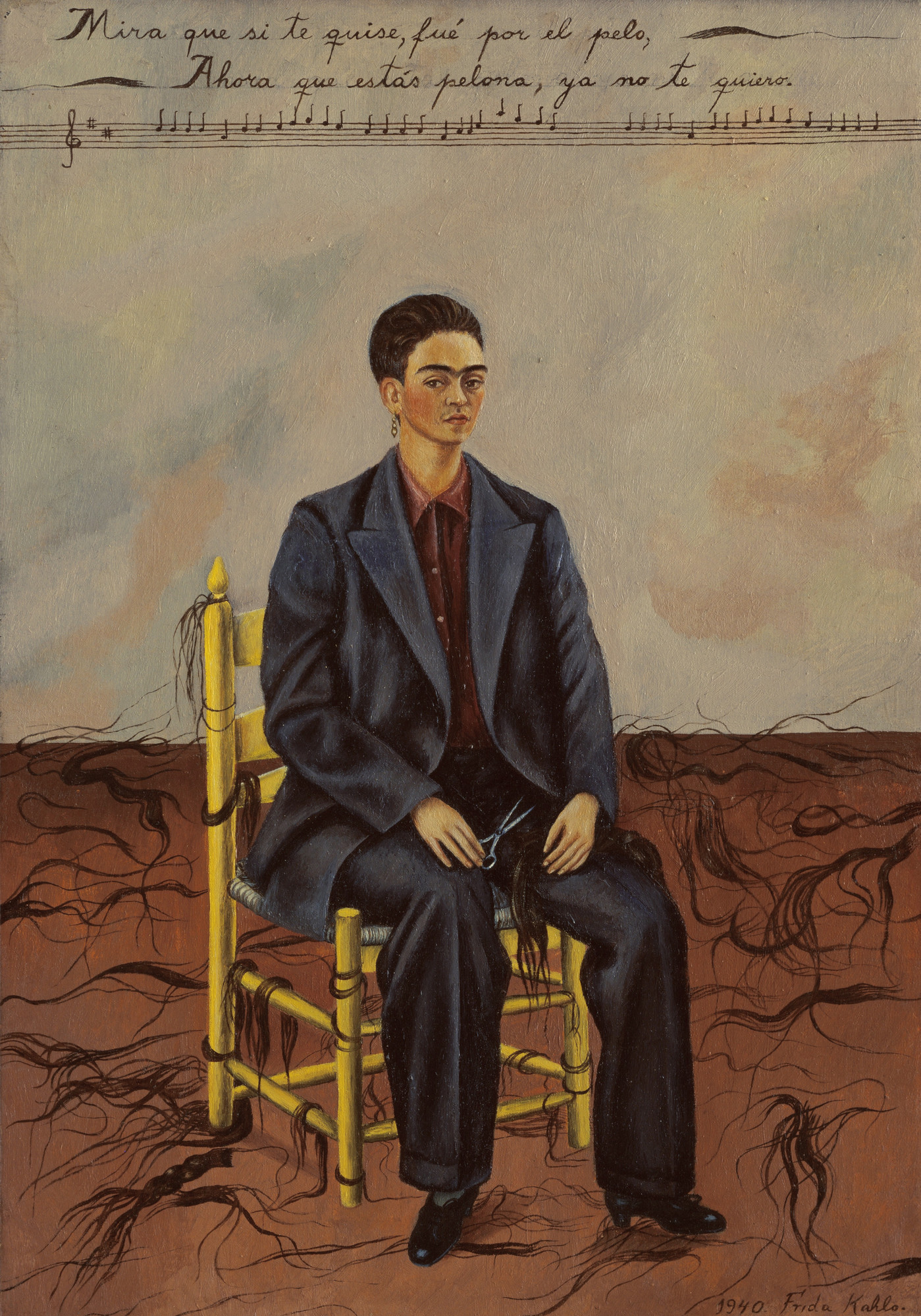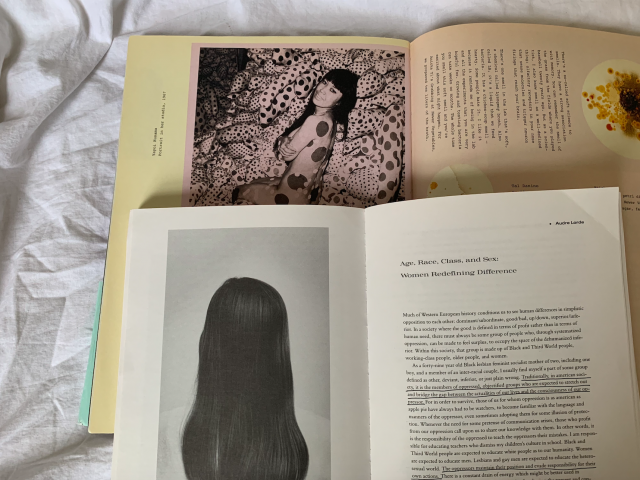
My project is investigating the use of self portraiture in feminist art. I have always been interested in gendered paradigms of knowledge – whether that be the question of logical versus embodied knowledge, or with respect to who is considered objective versus subjective. This is why I think that self-portraiture is such a compelling locus for thinking through gender, knowledge, power, and the body in visual culture – it upsets many of the standard conventions of portraiture, especially when taken up by artists who endeavour to give voice to overlooked experiences.
I have been reading extensively on a wide variety of art historians’ approaches to the themes that self-portraits interface with, including the role of emotion, subjectivity, expression, biography, the body, and pain in the field of art. Each week, I have been focussing on the self-portraiture of a different female-identifying artist from the 20th-century. I have then been writing essays on what their self-portraiture helps us to understand, and how that aligns with feminist politics of being and knowing. My plan is to compile these essays into a book, which I will continue to refine after the summer is over and hopefully submit somewhere for publication
One of the major themes of my research so far, and something that I did not anticipate would be such a frontal question, is what is a self-portrait, but even more centrally, what is the self? Modern thinkers have debated this question endlessly, some believing in the presence of a true authentic self which we reveal or express in different ways, which is usually housed within and then somehow revealed, and others arguing that there is no such thing, that “who we are” is unstable and constantly in flux.
When one thinks of traditional portraiture, the artist’s mission was often to render the likeness of a wealthy subject who had commissioned them with the intention to solidify their identity through signifiers of wealth, knowledge, power, purity, and other flattering representations of their character. As such, the portrait – especially once photography was developed – has been subtly allied with the ambition of communicating the ‘self,’ and moreover, to cement power and status. Feminist and queer theorists who argue against this ideology (of true selfhood) might say that it serves to uphold the belief that there is a specific way to be “a woman,” for example, and does not allow for variation or the dissolution of boundaries between ‘categories.’
The works that I have been studying thus far intervene in the tradition of the portrait as cohering a singular self, amplifying the point of view that selfhood is not preeminent but constructed and changing constantly. For many feminist artists, the self-portrait can be read as a negotiation between themselves and their environment. For example, my first chapter dealt with Frida Kahlo and the ways in which her portraits bank on the contradictory aspects of her identity, through her musings on nationality, imperialism, and gender. Kahlo’s oeuvre, which sees herself rendered in dozens of different costumes and worlds, pulls the rug out from under the concept of a fixed identity. We can think of this as a challenge to the ways in which the art world has tried desperately to fix her to a commercially salient, two-dimensional historical figure, whereas her paintings and writings show us a woman who was dynamic, experimental, and invigorated by challenging the status quo.

Thinking about selfhood has also been important in examining my own role as the narrator of the essays. It is important to me that I not feign objectivity, but make my presence obvious and thus render visible my own biases and proclivities. At the same time, it is also important not to consistently project myself onto the work that I am discussing or make myself the protagonist of someone else’s story.
As my writing on self-portraiture unfolds, so to does a self-portrait of me, the author, whether covertly or overtly. I have decided to lean into this and see what happens, to use what it might reveal to me about the very process that I am accounting for. As Adrienne Rich writes in Notes Toward a Politics of Location:
“The need to begin with a female body – our own – is understood not as applying a Marxist principle to women but for locating the grounds from which to speak with authority as women. Not to transcend this body, but to reclaim it. To reconnect our thinking and speaking with the body of this particular living human individual.”
